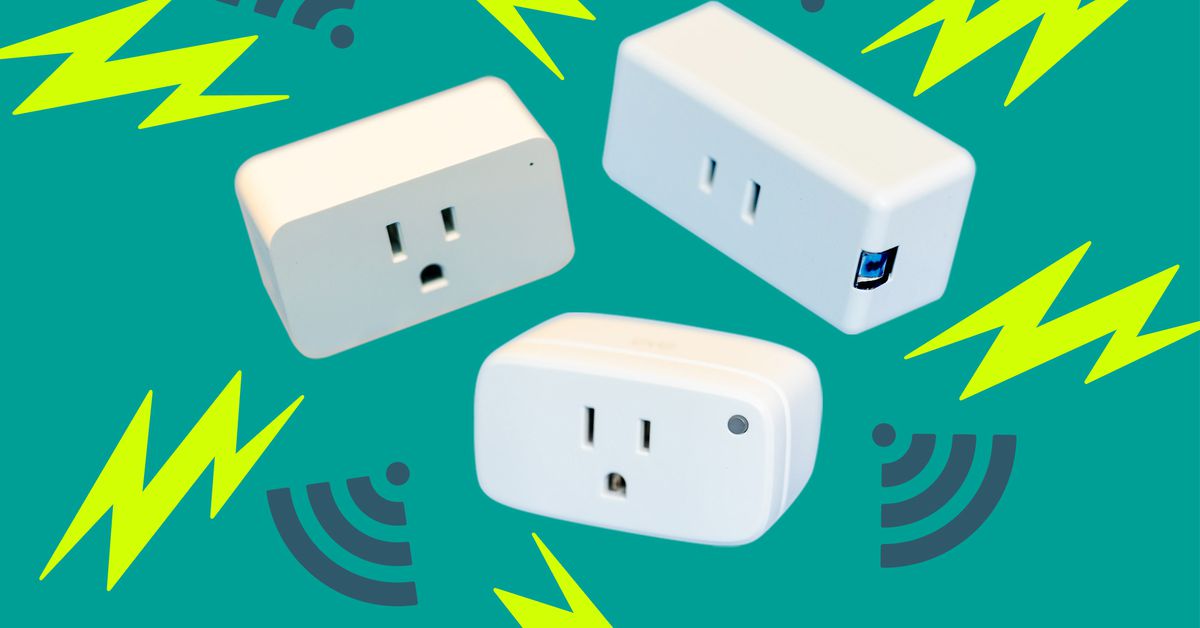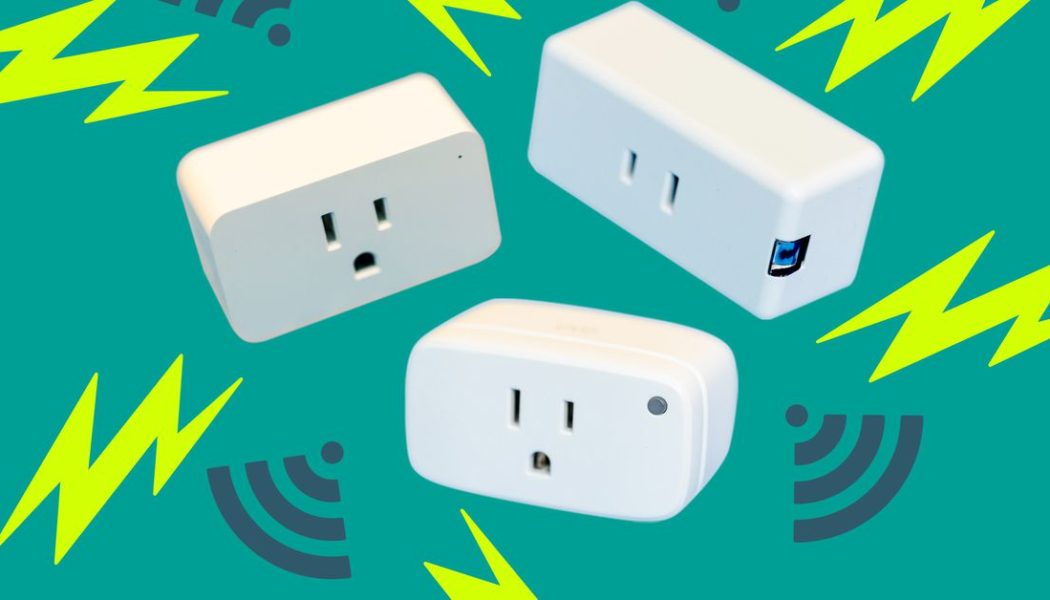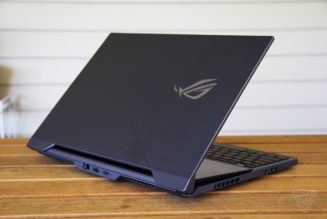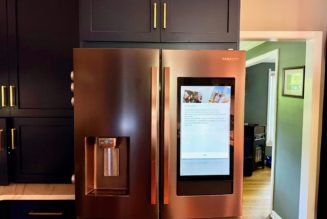
These misleadingly simple gadgets are some of the most useful smart devices you can have in your home.
Smart plugs are among the fastest, easiest, and most affordable ways to automate basic household devices. Plug one in, spend a few minutes setting it up, and enjoy the simple pleasure of turning a distant lamp on and off from the couch.
Beyond the obvious convenience of adding a smart plug — or two — to your home, these handy gadgets also come with cost-saving benefits. Some actively track energy usage and provide a detailed look at how much a given product costs to power. All smart plugs can stop energy-zapping appliances like TVs, streaming devices, game consoles, and charging cables from wasting electricity when you aren’t using them.
In addition to offering on-demand control and scheduling in the app, many plugs are also compatible with at least one major smart home platform to enable voice control and automations with third-party products. Select smart plugs now even work with Matter over Wi-Fi or Thread, so you can more easily use Amazon Alexa, Apple Home, Google Home, and others in the same house (at least, that’s the idea; more on this below).
The first smart plugs were positively massive (I’m looking at you, Belkin Wemo Home Control Switch). A one-outlet model would partially obscure the second outlet on a standard wall plate, rendering it completely useless. Things have progressed a ton since then, but I’m scarred by the plugs of yore. While it’s rare today for a smart plug to fully eclipse the second outlet, some still don’t make enough space for a standard three-prong plug to fit above or below it. No smart plug should obstruct the second wall socket; two smart plugs should be able to stack together on a typical two-outlet wall plate.
Basic on/off control and the ability to create custom schedules are a good start for a smart plug, but there are smart plugs with more advanced features, like vacation modes and timers. Some also track energy usage to help you better understand how much a specific appliance costs to power. Others work solely with lights and offer a dimming function for added ambiance. Certain weather-resistant smart plugs are rated for outdoor use so you never have to freeze your fingers in the cold to mess with your holiday lights.
Smart plugs are simple gadgets designed to add convenience to your daily life. They shouldn’t have clunky configurations, outdated apps or any other needless complexity. These are good things to avoid in any connected product, but smart plugs, in particular, should take very little effort to set up and use.
Whether you’re interested in controlling a single coffee maker so your first cuppa is ready when you wake up or you want to automate several devices with Matter in a multiplatform home, there’s a smart plug here for everyone.
This well-rounded plug is easy to control in the Kasa app, works all of the major smart home platforms, supports Matter, and offers additional features like energy monitoring.
This well-rounded plug is easy to control in the Kasa app, works all of the major smart home platforms, supports Matter, and offers additional features like energy monitoring.
Connectivity: 2.4GHz Wi-Fi / Works with: Amazon Alexa, Apple Home (via Matter), Google Home, SmartThings / Max wattage and amperage: 1,800 watts; 15 amps / Two or three prongs: Three / Energy monitoring: Yes / Indoor or outdoor: Indoor
The Kasa KP125M is the best smart plug for most folks due to its reliable performance, straightforward app, streamlined design, support for all of the major smart home platforms, bonus features like energy monitoring, and reasonable price (for now, at least; a pack of two is currently on sale for $30).
The KP125M’s ease of use starts with the plug itself, which is simple to control manually via the on / off button on the right side of the device. One plug doesn’t obstruct the other outlet, and two fit stacked together on a regular two-outlet wall plate.
The Kasa app has a minimal design and is well organized to quickly and easily find what you need. Its home screen displays all of your Kasa devices with on / off buttons for fast control. Scheduling works exactly as you’d expect and includes a sunrise / sunset option that automatically adjusts the times throughout the year. The app also has an Away Mode, which randomly turns your devices on and off to simulate someone being home. Energy monitoring is straightforward and gives you an overview of your usage for the day, month and year, as well as an estimate of your monthly electricity cost per plug based on either a fixed or time-of-use energy plan.
You can add this plug individually to your platform of choice for voice control and advanced automations. It worked very smoothly during my testing. I’d especially recommend this plug for use with Alexa and Google Home due to the easy setups and their responsiveness to my voice commands. This model also works with Matter and is our favorite smart plug that supports the nascent multiplatform standard due to its comparatively easy configuration and speedy response time, though my experience was far from perfect. Scroll down to the last section for more details on this.
TP-Link doesn’t sell this plug as a single — it only comes in packs of two or four (the four-pack is available for $50).
With solid performance and support for all of the major smart home platforms, this affordable Wi-Fi smart plug gives you the basics you need to control non-smart devices for less. It doesn’t have Matter or energy monitoring, but that’s alright at this price.
With solid performance and support for all of the major smart home platforms, this affordable Wi-Fi smart plug gives you the basics you need to control non-smart devices for less. It doesn’t have Matter or energy monitoring, but that’s alright at this price.
Connectivity: 2.4 GHz Wi-Fi / Works with: Amazon Alexa, Apple Home, Google Home, Samsung SmartThings / Max wattage and amperage: 1,800 watts; 15 amps / Two or three prongs: Three / Dimmable: No / Energy monitoring: No / Indoor or outdoor: Indoor
The Meross MSS110 will set you back just $23 for a pack of two and offers the standard features you’d expect for the price: on / off control, scheduling, and a timer. You can also create scenes in the app like “Party,” “Away,” or “Goodnight” if you have more than one Meross device you’d like to manage simultaneously.
This simple indoor smart plug reliably controlled my entryway table lamp on a set schedule, as well as on-demand in the app. It works with Alexa, Apple Home, Google Home, and SmartThings to enable additional smart capabilities, such as voice control and advanced automations with third-party products.
This Meross smart plug doesn’t support Matter or offer a vacation mode that randomizes on / off control to make it look like you’re home. It also took longer to set up than some other models due to a wonky configuration process that essentially required connecting the plug twice (once in the Apple Home app and again in the Meross app). But its broad compatibility and low price make up for it.
This two-prong smart plug reliably dimmed an LED-outfitted lamp without any noticeable flickering at low light levels. It supports all of the major smart home platforms as well as Matter.
This two-prong smart plug reliably dimmed an LED-outfitted lamp without any noticeable flickering at low light levels. It supports all of the major smart home platforms as well as Matter.
Connectivity: 2.4 GHz Wi-Fi / Works with: Amazon Alexa, Apple Home, Google Home, Matter (beta), Samsung SmartThings (via Matter) / Max wattage and amperage: 300 watts (incandescents), 100 watts (LEDs); 4 amps / Two or three prongs: Two / Dimmable: Yes / Energy monitoring: No / Indoor or outdoor: Indoor
Leviton’s Decora D23LP offers steady LED dimming without any flickering. It works natively with Alexa, Apple Home, and Google Home, and it has beta support for Matter, which lets it work with SmartThings and other Matter-compatible platforms, too.
The plug worked exactly as expected, letting me easily dim a table lamp in my entryway from the My Leviton app or with a voice command. Click on your plug from the app home screen to quickly turn it on and off. Click on the three dots on the top right corner of the plug to access the advanced control screen, where you adjust the brightness. The My Leviton app is missing a timer and isn’t particularly easy to navigate, but it’s good enough for standard on / off control and dimming.
You also have the option to add on one of the company’s Decora Smart Dimmer Anywhere Companions for a physical wall-mounted, wire-free dimmer switch that works with the D23LP. I did not test an Anywhere Companion device, but a wall switch accessory that’s supposed to control a dimmer-plug-connected lamp is intriguing. (Lutron has one, too, but its plug-in dimmer is much larger than Leviton’s.)
While this device does work with Matter, it’s through Leviton’s Matter Early Access Program. Once you request access to the program, you have to wait up to 24 hours to get the firmware update that enables it. If your plug is already connected to Apple Home for any reason, the firmware update will fully wipe the integration, and you’ll have to set it up all over again.
Not only does this smart plug offer the most detailed energy monitoring of any we tested, but it also works with Matter over Thread and is an especially good choice for Apple Home users.
Not only does this smart plug offer the most detailed energy monitoring of any we tested, but it also works with Matter over Thread and is an especially good choice for Apple Home users.
Connectivity: Thread / Works with: Amazon Alexa, Apple Home, Google Home, Matter, Samsung SmartThings / Max wattage and amperage: 1,800 watts; 15 amps Two or three prongs: Three / Dimmable: No / Energy monitoring: Yes / Indoor or outdoor: Indoor
This Thread-enabled smart plug has the most comprehensive energy monitoring of any model I tested. The Eve app gives you information about your consumption, the estimated cost of running the device by the minute, day, or week, and charts detailing the total consumption and the total cost by the hour, day, week, or month. There’s even a usage log updated every ten minutes if you want to get really granular with the stats. Energy monitoring data is only available in the Eve app.
The Eve Energy Smart Plug also works with Matter and all of the major platforms, but it’s especially easy to set up and control in the Apple Home app. That makes this model our favorite Apple Home-compatible smart plug, along with its top-notch energy tracking capabilities. It does require a Thread border router, and in a multiplatform house, Thread can be a bit of a headache.
Spending 40 bucks for a single plug is pretty steep, but Eve does sell a two-pack for $75, so you can at least save a little cash if you know you want more than one.
With straightforward app control and reliable dimming, this weather-resistant smart plug is tailor-made to tackle holiday lights and other plug-in outdoor lighting. It works with Alexa, Google Home, and SmartThings.
With straightforward app control and reliable dimming, this weather-resistant smart plug is tailor-made to tackle holiday lights and other plug-in outdoor lighting. It works with Alexa, Google Home, and SmartThings.
Connectivity: Wi-Fi, 2.4 GHz / Works with: Amazon Alexa, Google Home, Samsung SmartThings / Max wattage and amperage: 300 watts (incandescents), 150 watts (LEDs); 4 amps / Two or three prongs: Three / Dimmable: Yes / Energy monitoring: No / Indoor or outdoor: Outdoor, IP64
The Kasa KP405 is great for many of the same reasons as our top pick, the Kasa KP125M. It uses the same straightforward Kasa app with quick access to on / off control, scheduling, Away Mode, and a timer. It’s also currently on sale for $19 (it’s usually $30).
This product is IP64-rated for outdoor use, which means it is “dust-tight” and “protected against splashing water,” according to the International Electrotechnical Commission. It’s also dimmable. That means this outdoor smart plug is specifically designed for string lights, holiday lights, or any other outdoor lighting you’d plug into an outlet.
I especially like how easy it is to adjust your lights in the app via preset buttons that quickly change them from 100 to 75, 50, and 25 percent brightness. There’s also a simple interface for a more customizable dimming range, should you want to set yours at a different level.
This model doesn’t currently support Matter or work with Apple Home. It also doesn’t offer energy monitoring.
Leviton’s Decora Smart Plug (D215P-2RW) is a fine smart plug, but it’s expensive and doesn’t offer anything special that wasn’t already available on our top pick, the TP-Link Kasa KP125M.
The Meross Matter Smart Wi-Fi Plug Mini’s design doesn’t allow for two of its plugs to fit together on a single outlet, though I did fit one Meross plug and a typical three-prong laptop plug on the same two-outlet wall plate.
The Meross Smart Wi-Fi Plug (MSS120) has two outlets per unit, so you can control double the devices for your money. But two MSS120 plugs don’t fit on the same dual-outlet electrical plate. It was also a little fiddly to set up.
The Onvis Smart Plug S4 randomly disappeared from the list of devices in the Onvis app. If you plan to use a smart home platform to control and manage your device, this is less of an issue but otherwise seriously hurts its usability.
TP-Link’s Kasa Smart Wi-Fi Plug Slim with Energy Monitoring (EP25) and the company’s Kasa KP125M we like best overall share a similar list of features, but this model does not support Matter. If you have no interest in Matter, the EP25 is a good alternative.
The Leviton Decora Smart Outdoor Plug-In Switch (D215O-1RE) worked reliably during testing, and it supports Matter. Unfortunately, one of these plugs costs a whopping $56 and just doesn’t do enough to justify its high price.
The Wyze Plug is the most affordable model we tested, but it doesn’t offer as many smart home integrations as our top choice, the Meross Smart Wi-Fi Plug Mini (MSS110).
While the affordable Wyze Plug Outdoor has two outlets and offers energy monitoring, it’s missing the dimming function and well-designed app available on our favorite outdoor plug, the TP-Link Kasa KP405.
None of the seven Matter-compatible smart plugs I tested for this guide connected to more than one platform without issuing “Unable to Add Accessory” error messages. Whether over Wi-Fi or Thread, the standard was very finicky about the order I used to connect each platform to a given smart plug. Many of them let me add Apple Home first without complaint but then stubbornly and inexplicably refused to accept anything else after it.
I spent a lot of time resetting connections and trying again in a different order. I ultimately liked the Kasa KM125M the most when using Matter. It didn’t require signing up for any sort of software update like Leviton’s indoor plugs, and once I finally got all of the platforms added, it worked quickly and reliably. Adding Google Home first, followed by Apple Home, and then Amazon Alexa worked the best in the end, but I couldn’t tell you why.
And that gets to my main gripe with Matter today: the instructions are unclear or, worse, nonexistent. It’s a lot like Apple Home was in its earliest HomeKit days — a platform that was released into the world before the requisite infrastructure was in place to help make sense of it.
Matter has a lot of potential, but it definitely isn’t an effortless enabler of multiple platforms under one roof right now. That’s gonna take some time.
(Read this primer on Matter if you’re totally lost. And check out our list of every Matter device available today to see what products the standard supports right now.)









